- News
- Reviews
- Bikes
- Components
- Bar tape & grips
- Bottom brackets
- Brake & gear cables
- Brake & STI levers
- Brake pads & spares
- Brakes
- Cassettes & freewheels
- Chains
- Chainsets & chainrings
- Derailleurs - front
- Derailleurs - rear
- Forks
- Gear levers & shifters
- Groupsets
- Handlebars & extensions
- Headsets
- Hubs
- Inner tubes
- Pedals
- Quick releases & skewers
- Saddles
- Seatposts
- Stems
- Wheels
- Tyres
- Tubeless valves
- Accessories
- Accessories - misc
- Computer mounts
- Bags
- Bar ends
- Bike bags & cases
- Bottle cages
- Bottles
- Cameras
- Car racks
- Child seats
- Computers
- Glasses
- GPS units
- Helmets
- Lights - front
- Lights - rear
- Lights - sets
- Locks
- Mirrors
- Mudguards
- Racks
- Pumps & CO2 inflators
- Puncture kits
- Reflectives
- Smart watches
- Stands and racks
- Trailers
- Clothing
- Health, fitness and nutrition
- Tools and workshop
- Miscellaneous
- Buyers Guides
- Features
- Forum
- Recommends
- Podcast
review
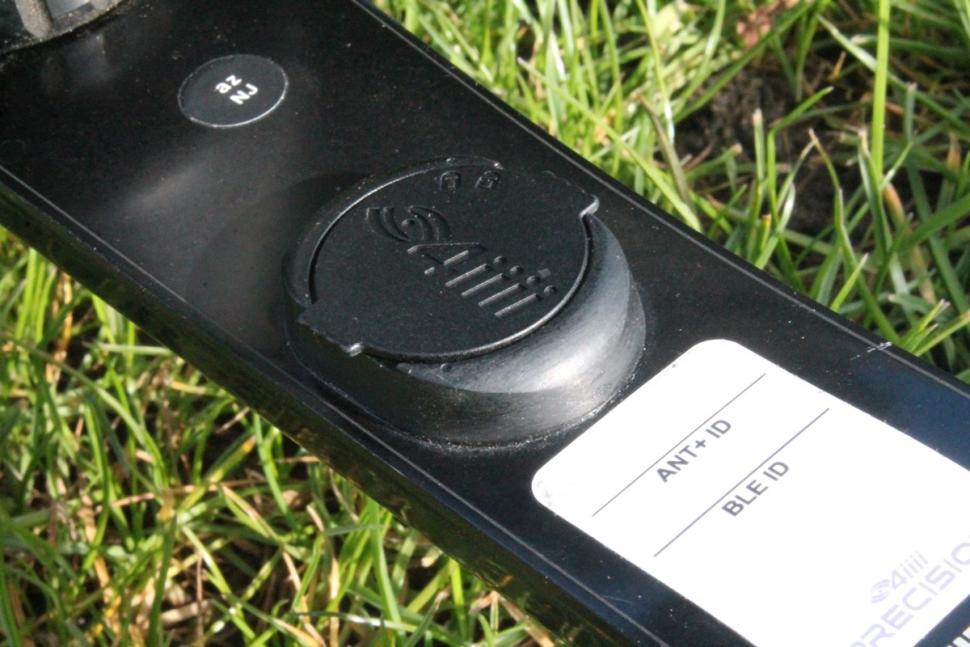 4iiii Precision 20 - 3.jpg
4iiii Precision 20 - 3.jpg£499.00
VERDICT:
Solid power meter that delivers highly usable data, as long as you're satisfied with a left-leg-only system
Weight:
9g
Contact:
At road.cc every product is thoroughly tested for as long as it takes to get a proper insight into how well it works. Our reviewers are experienced cyclists that we trust to be objective. While we strive to ensure that opinions expressed are backed up by facts, reviews are by their nature an informed opinion, not a definitive verdict. We don't intentionally try to break anything (except locks) but we do try to look for weak points in any design. The overall score is not just an average of the other scores: it reflects both a product's function and value – with value determined by how a product compares with items of similar spec, quality, and price.
What the road.cc scores meanGood scores are more common than bad, because fortunately good products are more common than bad.
- Exceptional
- Excellent
- Very Good
- Good
- Quite good
- Average
- Not so good
- Poor
- Bad
- Appalling
The 4iiii Precision is a crank-based power meter that delivers sound, usable data, as long as you're happy with the limitations of a single-sided system.
The Precision system consists of a tiny pod that's bonded to a non-driveside crank arm. In that way it's similar to a Stages unit. I used the Shimano Dura-Ace version (they're all Shimano) and it weighed just 9g more than the crank I took off, and that includes the battery. A Shimano 105 version is £349, and a Shimano Ultegra version is £429.
> Find your nearest dealer here
You can also provide the crank yourself and have 4iiii install the pod.
The pod sticks out 8mm from the centre of the crank so the Precision is compatible with the vast majority of frames out there.
You just turn the battery cover with your fingers to remove it. That might not instil confidence that it'll stay put but it hasn't gone walkabout during testing or even looked like it might. The battery is good for over 100 hours of use and as it's a CR2032 3V you can get replacements all over the place.
The pod itself is waterproof – nothing got inside when I took a hose to it – and it's unlikely to take a knock thanks to its low profile and its positioning. I mean, it could, but the inner face of a crank is hardly the most exposed area of your bike.
Setting up
Setting up the 4iiii Precision is simple: you take off your existing crank, you put this one on, and that's yer lot. It transmits via both Bluetooth Smart and ANT+ so it'll talk to the vast majority of devices you're likely to want to use, including Garmin Edge computers and your mobile phone. I used it most often with a Garmin Edge 500 and Edge 510. Pairing is simple and you only need to do it once.
Unlike some power meters, the 4iiii Precision does require zeroing at the start of every ride. You need to point the crank down and hit the relevant button on your computer. 4iiii says that you should zero the system after any large temperature fluctuations too. I guess that could be an issue in a mountainous area, but for most UK rides that's unlikely to be a problem.
Okay, so getting started with the Precision 2.0 could hardly be easier; what about actually using it?
Well, it is a single-leg system. It measures your left leg only and then doubles it to give your total power. Is that a problem? Not if your power is equally distributed 50:50 between your legs, but most of us have some discrepancy, at least some of the time. When I use dual-sided systems they tend to say my power averages 50:50 between right and left most of the time, but sometimes it's 51:49, and occasionally it's 52:48.
Obviously, if your left leg is only putting out 48% of the power and the system is assuming it's putting out 50%, you're going to have a level of inaccuracy in the data.
Say you're putting out 300w. If that's split 52:48 between right and left, that would mean that 156 watts would be coming from your right leg and 144 watts from your left leg. If the 4iiii system measured your left leg at 144 watts and doubled it, it would give your total wattage at 288 watts rather than 300 watts.
I've been using the 4iiii Precision alongside Garmin Vector pedals and a PowerTap hub over the past few months. We've chosen the PowerTap G3 hub system as our benchmark because we can use it alongside most other power meters to get data we can compare. PowerTap is a proven, well-trusted system, and we need to have something as our standard. Rightly or wrongly, the PowerTap is it.
The average power figures I've got from the 4iiii system have usually been within 3% of the PowerTap's over a full ride, just occasionally larger than that, although that doesn't really tell you much. If a power meter over-measured peaks and under-measured troughs, for example, it might still give an accurate average.
In graphic detail…
It's more revealing to look at graphs of power measurement over the course of rides in more detail, and when you do that the 4iiii tracks the PowerTap much more closely than you might expect.
Take this hour-long ride, for example. I tried a bit of everything I could think of to mix it up and challenge the power readings: a 5min climb at the start, some pootling along, some little humps and bumps, some 10 second bursts... In terms of intensity, the ride was all over the place.
The purple line shows data from the PowerTap hub, the blue line is the 4iiii Precision power meter.
The average power figures for the whole ride are within 3% of one another, with the 4iiii figures tracking those of the PowerTap pretty closely in all situations. Smooth the chart (below) and it's easier to see that the PowerTap measures a little higher in most situations.
Let's look at a short section of the ride (below).
I did five 10-second intervals off a minute. For four of the five efforts, it's actually the 4iiii peak figures that are slightly higher than those of the PowerTap – we're talking about 440 watts versus 437 watts (a difference of 0.7%), and 504 watts versus 477 watts (a difference of about 5%), as a couple of examples.
The 4iiii's troughs tend to be a little lower in this section too.
However, elsewhere the PowerTap peaks are a little taller. It could be that minor left/right discrepancies in my power output are getting doubled by the 4iiii system or it could be something entirely different. It could be that the 4iiii system is measuring accurately and the PowerTap system is at fault, or perhaps a bit of both.
What we can say, though, is that the two different systems follow one another closely most of the time and that they match one another in terms of response to increased intensity. It's not that one lags behind the other.
Check out this 10min section (below) where the power figures range all over the place from under 100 watts to nearly 500 watts. The 4iiii troughs tend to be a little lower than those of the PowerTap but the peaks and the rate of increase/decrease in power (the slopes on the graph) are very similar indeed. They don't track one another perfectly, but they're close considering that one set of data comes from a hub and the other comes from a left-side-only crank.
It's quite easy to make the 4iiii data diverge from that of dual-sided (or hub-based) systems – you just pedal really hard with one leg and really easy with the other. Inevitably, the accuracy of a one-sided system that assumes parity is going to suffer in that situation. In the real world, an injury to one leg that means power output on that side is significantly diminished could affect the system's accuracy. That's pretty obvious.
However, my experience is that the 4iiii Precision offers sound data across a variety of situations with no obvious flaws – other than the single-sidedness discussed above. I've heard of other people having trouble with the ANT+ signal dropping out occasionally but I've not experienced that.
> How to choose a cycling power meter
Given the choice, we'd all rather have a dual-sided power meter – and 4iiii now offers the Precision Pro which is exactly that. Prices have yet to be finalised but they'll obviously be considerably higher. If you have the extra money, great, go for it. But if you don't want to spend that much, the left-sided Precision provides sound data from which to build your fitness/training.
Verdict
Solid power meter that delivers highly usable data, as long as you're satisfied with a left-leg-only system
road.cc test report
Make and model: 4iiii Precision Left-Side Power Meter
Size tested: 172.5mm
Tell us what the product is for, and who it's aimed at. What do the manufacturers say about it? How does that compare to your own feelings about it?
4iiii says, "Whether you're a pro or simply training hard, Precision left-side power meters deliver industry-leading accuracy, highly dependable cadence data, 3D power meter technology capable of measuring tri-axial strain on your crank arm. Packaged into a durable, lightweight design and compatible with broad ANT+ and Bluetooth head units, Precision helps you train harder and smarter.
"Precision left-side ride ready version comes with a new Shimano left crank arm (105, Ultegra, or Dura-Ace)."
Tell us some more about the technical aspects of the product?
4iiii lists these features and specs:
Features
3D power meter technology (patent pending) measures tri-axial strain on your crank arm
Accurate, consistent data
Lightweight, compact design
Battery status indicator via 4iiii app
Compatible with ANT+, Bluetooth Smart head units, smartphones, and other 4iiii products
User-friendly app and configurable rider compensation scale factor
Easy setup and maintenance
Over-the-air upgrade capability for adding new features and updates
Specifications
Weight: 9 grams
Data accuracy: +/- 1% error margin
Battery life: 100+ hours on 2032 coin cell battery
Battery status indicator: Alert at 15% battery power
Rate the product for quality of construction:
7/10
It's a tiny plastic pod bonded to a crank. There's really not a lot to go wrong here.
Rate the product for performance:
8/10
Most people would prefer a system that measures power on both sides rather than just one, but given that limitation, the 4iiii Precision works well to provide highly usable data.
Rate the product for durability:
8/10
It's waterproof and concerns I had about the durability of the battery cover proved unfounded.
Rate the product for weight (if applicable)
10/10
It'll add 9g to your bike. You simply won't notice it.
Rate the product for value:
8/10
Tell us how the product performed overall when used for its designed purpose
Unless you have a large discrepancy in power between your left and right legs, it puts in a solid performance.
Tell us what you particularly liked about the product
Ease of set up.
Tell us what you particularly disliked about the product
Zeroing the system before every ride is a bit of a bore. I'd rather have a dual-sided system, on the whole, although that would add to the price.
Did you enjoy using the product? Yes
Would you consider buying the product? I'd definitely consider it, yes.
Would you recommend the product to a friend? Yes
Use this box to explain your score
Okay, any system that measures your left leg only is going to have certain limitations. However, our results comparing data from the 4iiii with that of other systems suggests that those limitations aren't as large as you might imagine. A single-sided power meter will be sufficient for many people. The £500 price tag is largely down to the fact that this is a Dura-Ace crank and that's never going to be cheap. Go for 105, say, and you're getting a decent system at a reasonable price.
About the tester
Age: 43
I usually ride: My best bike is:
I've been riding for: Over 20 years I ride: Most days I would class myself as: Expert
I regularly do the following types of riding: commuting, club rides, sportives, general fitness riding
Mat has been in cycling media since 1996, on titles including BikeRadar, Total Bike, Total Mountain Bike, What Mountain Bike and Mountain Biking UK, and he has been editor of 220 Triathlon and Cycling Plus. Mat has been road.cc technical editor for over a decade, testing bikes, fettling the latest kit, and trying out the most up-to-the-minute clothing. He has won his category in Ironman UK 70.3 and finished on the podium in both marathons he has run. Mat is a Cambridge graduate who did a post-grad in magazine journalism, and he is a winner of the Cycling Media Award for Specialist Online Writer. Now over 50, he's riding road and gravel bikes most days for fun and fitness rather than training for competitions.
Latest Comments
- slc 15 min ago
An excellent plan. In fact the Church Road site has parking spaces for rent from time to time, which are snapped up, though not quite as quickly as...
- webbierwrex 20 min 35 sec ago
At first I thought 'Cool, is this a commercial device to hot wax chains while on the bike' and then I read it and was quickly disappointed.
- Hirsute 24 min 11 sec ago
It's important to look at doge's failings when a handful of people/organisations in the UK think it is something to emulate....
- Vo2Maxi 31 min 43 sec ago
I did indeed! 🤦♂️ Corrected now, thank you.
- Tom_77 36 min 17 sec ago
Eventually managed to get my hands on these, ordered from Cycling 2000 (looks like a few other UK shops also have them)....
- Tom_77 46 min 13 sec ago
My brother bought me this mug - no occasion, just "saw this and thought of you".
- maxdabrit 51 min 33 sec ago
It will be even worse to read when the missing bottle cages are added.
- eburtthebike 55 min 8 sec ago
"A new study suggests that electric scooter schemes appear to reduce the risk of cycling collisions by around 20 per cent — University of Bristol...
- Rendel Harris 1 hour 17 min ago
Indeed, I spent one of the happiest years of my life living in Bath as a postgraduate student, just about that point on your map where Bathwick...
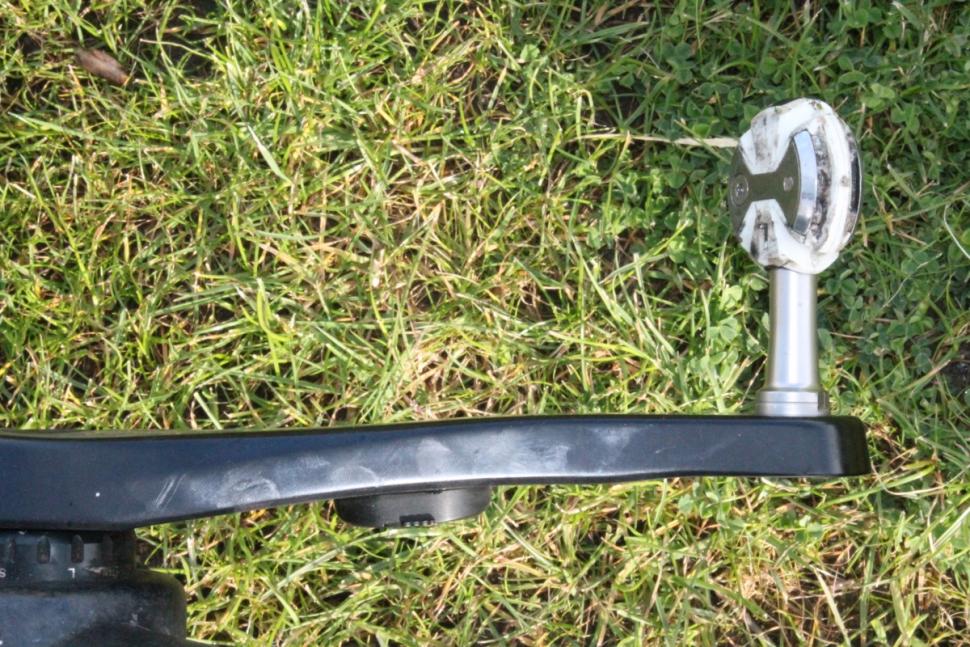
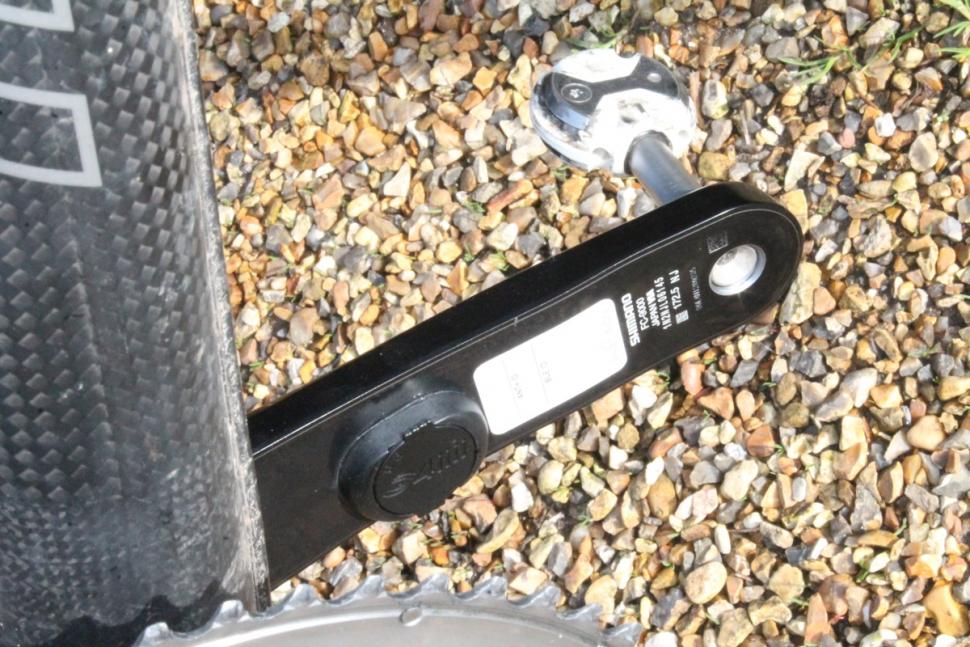

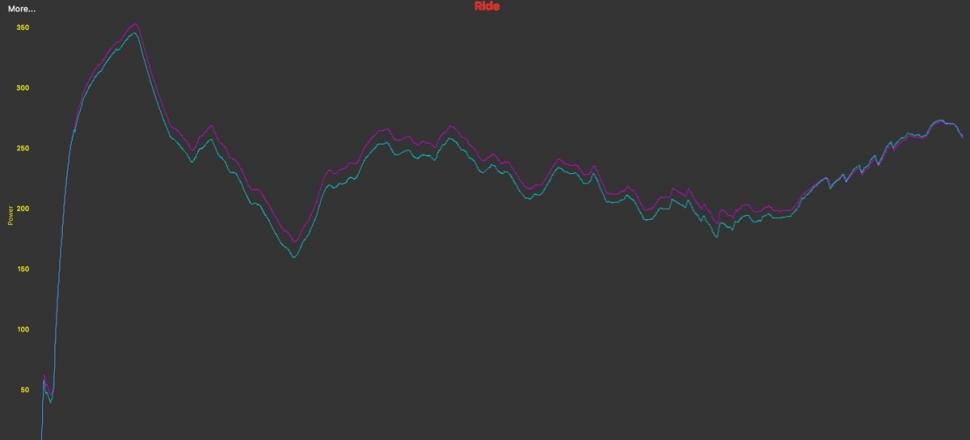
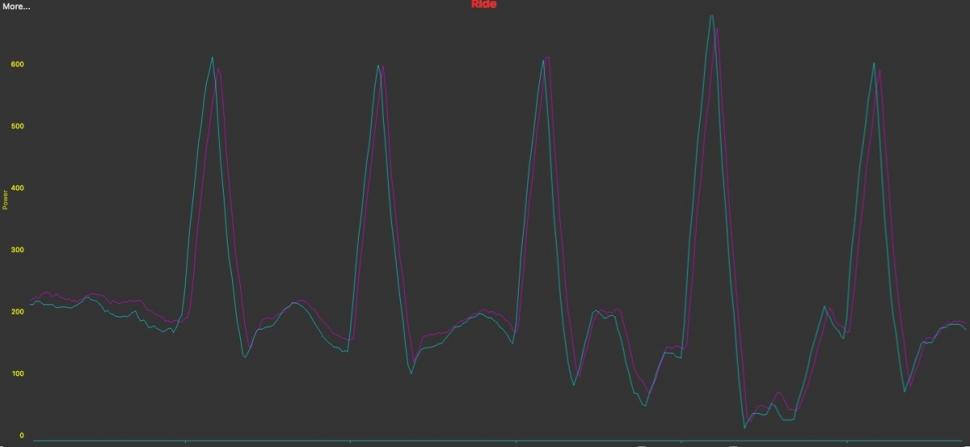
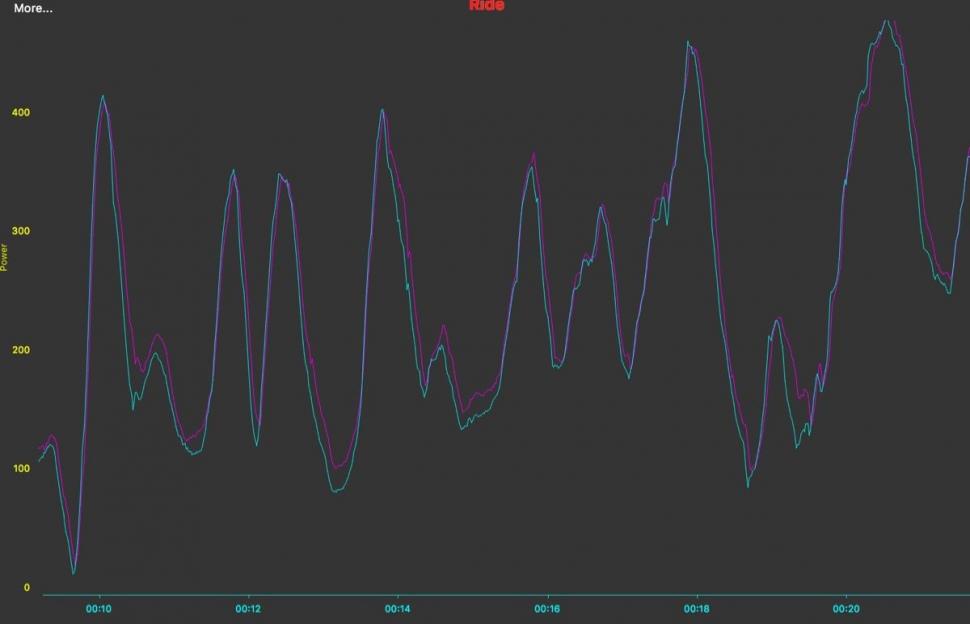
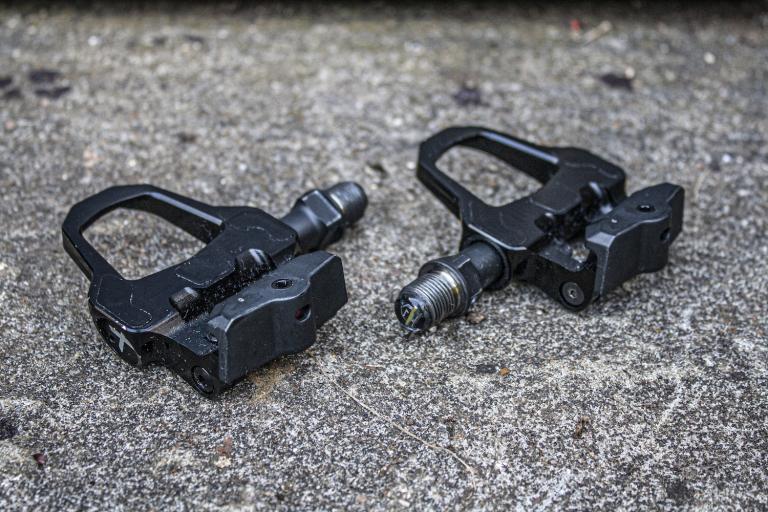
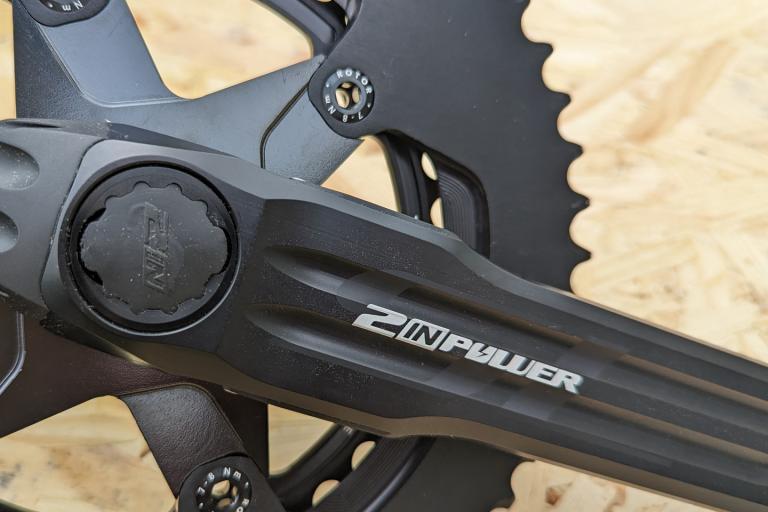


Add new comment
17 comments
Think there already is a UK based distributer, as per link in review, www.4iiiuk.com
Alas no stock
http://www.4iiiiuk.com/?product=precision-power-meter
And no option to post them your own crank for install option
There is some stock around UK retailers. Just depends if they have your crank model and length available.
For example Hargroves have all Dura Ace options in stock and 2 of the 3 Ultegra options (170 & 172.5).
Most air freight goes on passenger planes so it's not generating extra flights per se. And it doesn't cost that much as the plane is scheduled to fly whether the hold (or cabin) is full or not. Exceptions being the usual culprits of certain batteries and the like
Planes fly and are fuelled by weight. Everything you load on one burns carbon. In the US it can be several flights too.
All transport burns carbon, including the loading/offloading, truck delivery to hubs and delivery from hubs too.
I was looking just for this, aftermarket fit on existing cranks is awesome. From a sustainability point of view I hate the thought of all these spare crank arms...
Unfortunately the two-way postage in and out of the US is going to cost you around 80USD and the tax on the import back from the US is going to make that there abouts with stages pricing (inc. of new crank arm).
4iii get yourselves a UK disributor QUICK. I WILL BUY YOU!
Yes but then you have to ship a crank arm two ways by plane! The more shipping that happens, the more planes we need to put in the sky, the more airport expansions..
That crank arm will have made countless plane and road transport journeys. Crazy really. How hard is it for them to have one workshop in each country with an approved fitter.
as opposed to mining, smelting and hydroforming aluminium? >>>>
Travelling to and from work to fit a sensor on a crank arm sent on a plane from 100s miles away on machinery that needs to be made from the afformentioned processes?
I only see lose, lose. And without a carbon audit I won't declare a marginal winner.
Power meters need to be fitted on crank sets at production basically, and we're moving there thankfully.
I was looking at a 4iiii meter a while back but they were faffing around with self install options then wouldnt do either Campy or carbon cranks.
Also in the running was Watteam (they promised a Q4 2015 release date but it came and went) and BePro.
Ended up with BePro: €716 (this was pre-Brexit £££ 30% value drop so it was around £530) for dual pedal option including postage to UK (direct from them in Italy). No additional custom taxes, no silly postage charges and theyve called me since to find out how I was getting on with them! Bets of all I can move them to any bike / groupset with a small amount of setup/configuration.
DC Rainmaker does a good review of them: http://www.dcrainmaker.com/2015/09/favero-depth-review.html
because physics.
Yup. Physics renders it completely impossible to have power meters on carbon cranks!
Did stages release their carbon crank models at the same time as their aluminium ones? No, because it's harder to make them work right. I see no reason to doubt Precision will get there, but the problem is non-trivial.
https://www.evanscycles.com/4iiii-precision-power-meter-shimano-105-5800...
Sorted?
Dura Ace model is £500. Can buy a Stages on sale for just a bit more than that. Can't see any reduction on the 4iiii's yet.
Was tempted, website puts it at £308 if you send the crank in, which to me is a nice price for a seemingly sound power meter.
Then went to checkout and they charge over £50 for delivery!
Just no, on principle!
Then there is this little caveat:
"For customers outside of Canada and the USA orders will be subject to applicable VAT and duties".
Surely you'd expect a crank meter to measure a higher value than a hub meter because you have loss at the chainring/chain interface, losses within the chain itself and more losses in the sprocket/chain/freehub interface?